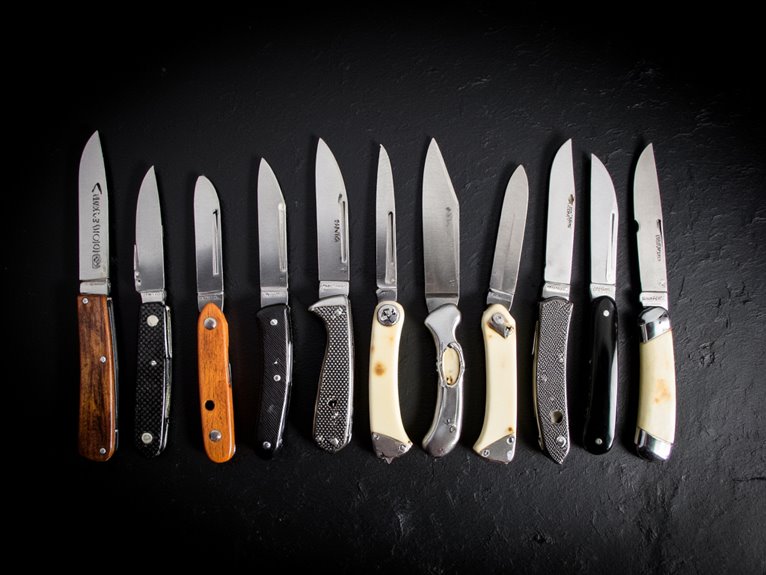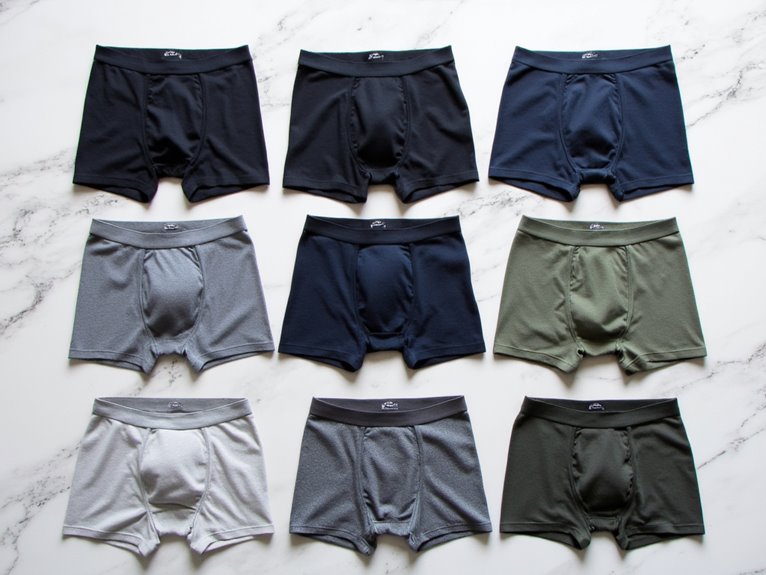Do Backpackers Use Tents?
Backpackers almost universally carry tents as a crucial component of their gear, recognizing the importance of reliable shelter in ensuring a safe and enjoyable wilderness experience. A reliable tent provides a safeguard against unpredictable weather conditions, offering a dry and comfortable refuge from the elements. It's essential for protecting backpackers from harsh winds, torrential rains, and scorching sun, directly impacting their physical and mental well-being. By understanding the significance of tents in backpacking, you'll uncover the intricacies of shelter selection and its profound impact on your journey.
We are supported by our audience. When you purchase through links on our site, we may earn an affiliate commission, at no extra cost for you. Learn more. Last update on 1st January 2026 / Images from Amazon Product Advertising API.
Types of Backpackers Who Carry Tents
Seasoned thru-hikers, ultralight enthusiasts, and solo travelers are among the diverse group of backpackers who often carry tents as a vital component of their outdoor adventures.
These individuals prioritize shelter and protection from the elements, recognizing that a reliable tent can be a lifesaver in harsh weather conditions.
Long-distance hikers, in particular, rely on tents to provide a comfortable and dry space to rest and recover after a grueling day on the trail.
Additionally, minimalist backpackers who prioritize lightweight gear often opt for compact and efficient tent designs that balance functionality with weight considerations.
Benefits of Bringing a Tent Backpacking
When venturing into the wilderness, a reliable shelter is vital to guarantee a safe and enjoyable backpacking experience.
Bringing a tent provides a safeguard against unpredictable weather conditions, offering a dry and comfortable refuge from the elements.
Shelter From the Elements
A sturdy tent provides a reliable sanctuary from the elements, shielding backpackers from harsh winds, torrential rains, and scorching sun, allowing them to recharge and refocus for the next day's adventure.
This shelter from the elements is crucial for backpackers, as it directly impacts their physical and mental well-being. A good night's sleep, protected from the elements, can make all the difference in a backpacker's performance and overall experience.
Weather protection: A tent shields backpackers from extreme weather conditions, ensuring they stay dry and comfortable.
Insect protection: A tent provides a bug-free zone, keeping mosquitoes, ticks, and other biting insects at bay.
Psychological comfort: A sturdy tent offers a sense of security and comfort, allowing backpackers to relax and recharge for the next day's journey.
Lightweight and Compact
Modern backpacking tents have evolved to prioritize portability, with designers focusing on creating lightweight and compact structures that minimize bulk without sacrificing performance.
This shift towards lightweight designs has substantially benefited backpackers, allowing them to carry shelters that weigh mere pounds instead of cumbersome kilos.
The resulting reduction in pack weight and volume enables backpackers to cover more ground with less fatigue, making their journeys more enjoyable and efficient.
In addition, compact tents facilitate easier storage and quicker setups, allowing backpackers to establish camp swiftly and focus on exploring their surroundings.
Weight and Space Considerations
When selecting a tent for backpacking, weight and space considerations are vital to facilitate a comfortable and efficient journey.
Ultralight options are available, but it's essential to balance weight savings with the need for sufficient interior space to accommodate gear and provide a comfortable living environment.
Ultralight Options Exist
Frequently, backpackers opt for ultralight tents that shave precious ounces off their overall pack weight, allowing for more efficient and enjoyable journeys. By selecting ultralight options, backpackers can allocate more energy to traversing challenging terrain and appreciating scenic vistas.
When it comes to ultralight tents, every gram counts.
Material selection: Look for tents made from lightweight yet durable materials, such as silnylon or Dyneema.
Design simplicity: Opt for tents with minimal poles, clips, and other components to reduce weight.
Seasonal adaptability: Choose tents designed for specific seasons or conditions to minimize unnecessary features and weight.
Packing Space Matters
In backpacking, every available cubic inch of pack space is precious real estate, and the tent's packed size can substantially impact the overall organization and accessibility of gear.
A smaller tent allows for more efficient packing, enabling backpackers to allocate space for other essential items.
When choosing a tent, it's essential to weigh, particularly the length and diameter of the rolled tent. A shorter and more compact tent allows for easier packing and reduces the likelihood of awkwardly shaped bundles.
In addition, a smaller tent enables backpackers to utilize smaller, more accessible compartments, making it easier to locate and retrieve gear during the trip.
Every Ounce Counts
Every ounce shaved from the tent's weight translates to increased agility and energy efficiency on the trail, allowing backpackers to cover more ground with less fatigue.
In the realm of backpacking, weight and space considerations are paramount. A lighter tent means more energy for the journey ahead, and a more enjoyable experience overall.
Three key benefits of a lightweight tent are:
- Increased mobility: A lighter tent allows backpackers to cover more ground with less effort, making it ideal for long-distance treks.
- Improved packability: A compact tent takes up less space in the backpack, leaving room for other essential gear.
- Enhanced comfort: By reducing the weight and bulk of the tent, backpackers can enjoy a more comfortable and relaxing camping experience.
Tent Options for Ultralight Enthusiasts
For ultralight enthusiasts, the quest for the perfect shelter often boils down to a delicate balance between minimal weight and maximum protection from the elements.
In terms of tent options, ultralight backpackers typically opt for shelters that prioritize weight reduction without compromising performance.
Tarptents, silnylon tents, and single-wall designs are popular choices, offering remarkable weight savings without sacrificing durability.
These tents often feature minimalist designs, simplified pole systems, and advanced materials to minimize weight while maintaining weather resistance.
With careful consideration, ultralight enthusiasts can find a tent that meets their needs, providing a comfortable and reliable shelter without weighing them down.
Shelter Alternatives to Traditional Tents
When venturing into the wilderness, backpackers seeking alternatives to traditional tents often investigate innovative shelter solutions.
Hammock camping options, for instance, offer a unique approach to sleeping under the stars, providing a comfortable and versatile way to rest while minimizing gear weight.
Meanwhile, tarp shelter systems provide a more minimalist approach, relying on a simple yet effective combination of fabric and cordage to provide protection from the elements.
Hammock Camping Options
Freedom from the constraints of traditional tent camping is a siren's call to many backpackers, who are increasingly turning to hammock camping options as a shelter alternative that combines comfort, versatility, and reduced pack weight.
Hammock camping offers a unique set of benefits, including:
Improved comfort: Hammocks allow for a more ergonomic sleeping position, reducing pressure points and promoting better sleep.
Increased versatility: Hammocks can be set up in a variety of configurations, including between trees, on a stand, or even on the ground.
Reduced pack weight: Hammocks are often lighter and more compact than traditional tents, making them an attractive option for ultralight backpackers.
Tarp Shelter Systems
Beyond hammock camping, backpackers seeking alternative shelter options can investigate tarp shelter systems, which offer a minimalist approach to weather protection that can be just as effective as traditional tents.
Tarp shelter systems typically consist of a waterproof tarp, poles, and stakes. They provide excellent protection from wind and rain, while also being extremely lightweight and compact.
By using trekking poles or adjustable tarp poles, backpackers can create a customized shelter that suits their needs.
Tarp shelter systems are ideal for ultralight enthusiasts, as they can reduce pack weight and bulk. Additionally, tarps can be easily set up and taken down, making them a convenient option for backpackers who value simplicity and flexibility.
The Role of Tents in Bad Weather
In inclement weather conditions, a well-designed and properly pitched tent serves as a vital barrier between backpackers and the elements, providing a reliable shelter that can mean the difference between a comfortable night's sleep and a miserable, sleepless one.
When the weather turns, a tent's performance can be a lifesaver.
A tent protects backpackers in bad weather in three key ways:
- Water resistance: A waterproof tent keeps rain and snow out, ensuring a dry and comfortable shelter.
- Wind resistance: A sturdy tent with a secure pitch can withstand strong winds, preventing damage and collapse.
- Insulation: A well-insulated tent retains body heat, keeping backpackers warm and cozy even in freezing temperatures.
How Tents Impact Backpacking Itineraries
A backpacker's tent of choice can profoundly influence the scope and flexibility of their itinerary, as it dictates the frequency and duration of stops, as well as the availability of campsites.
A lightweight and compact tent, for instance, enables backpackers to cover longer distances and stop at remote campsites, whereas a bulkier tent may require more frequent and longer stops to accommodate its weight and size.
Additionally, the type of tent used can also impact the route taken, as backpackers may need to adjust their itinerary to accommodate campsites with suitable terrain and accessibility.
The Tentless Backpacking Experience
Ultralight enthusiasts and seasoned backpackers are increasingly embracing the tentless backpacking experience, where the absence of a shelter forces a deeper connection with nature and a heightened sense of self-reliance. This approach requires meticulous planning, adaptability, and a willingness to adapt to the elements.
By ditching the tent, backpackers can lighten their load. Shedding the weight of a tent and its accessories allows for a more agile and efficient hike.
Immerse in nature. Without the confines of a shelter, backpackers are more attuned to their surroundings, fostering a deeper appreciation for the natural world.
Develop resourcefulness. The tentless experience demands creativity and problem-solving, honing essential skills for traversing the wilderness.
The Gear Haul for Long-Distance Hikers
Long-distance hikers often face the overwhelming task of hauling a substantial amount of gear, requiring careful planning and strategic packing to guarantee a comfortable and successful journey.
A well-curated gear haul is vital to minimizing weight, maximizing comfort, and optimizing performance.
Key considerations include selecting lightweight yet durable equipment, streamlining clothing and accessories, and allocating space for essentials like first aid kits, navigation tools, and emergency supplies.
Additionally, hikers must balance the need for comfort items, such as sleeping pads and camp chairs, with the necessity for lightweight, high-calorie food and sufficient hydration.
Tents for Solo Vs Group Backpacking
When selecting a tent for backpacking, a vital consideration is the number of occupants it needs to shelter, as solo hikers and group backpackers often require distinctly different designs and features to provide a comfortable and safe camping experience.
For solo backpackers, a lightweight and compact tent with a minimalist design is often preferred.
In contrast, group backpackers require more interior space, ventilation, and potentially more entrances and exits.
Key considerations for group tents include:
Floor area: Confirm the tent can comfortably accommodate the number of occupants, with sufficient floor space for gear and movement.
Vestibule space: Adequate vestibule space allows for gear storage and protection from the elements.
Color and visibility: Brightly colored tents can aid visibility in low-light conditions, enhancing safety for group backpackers.


